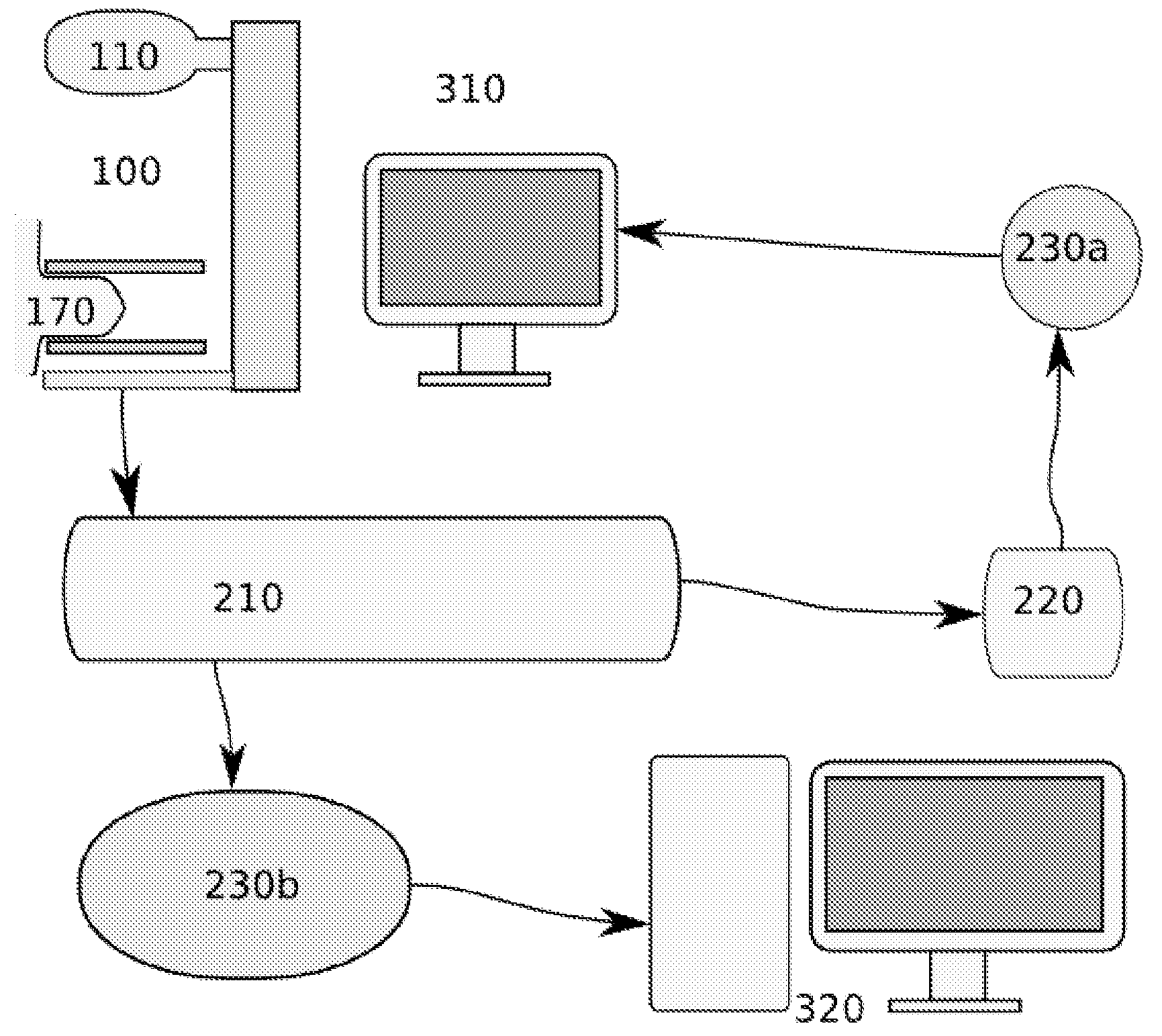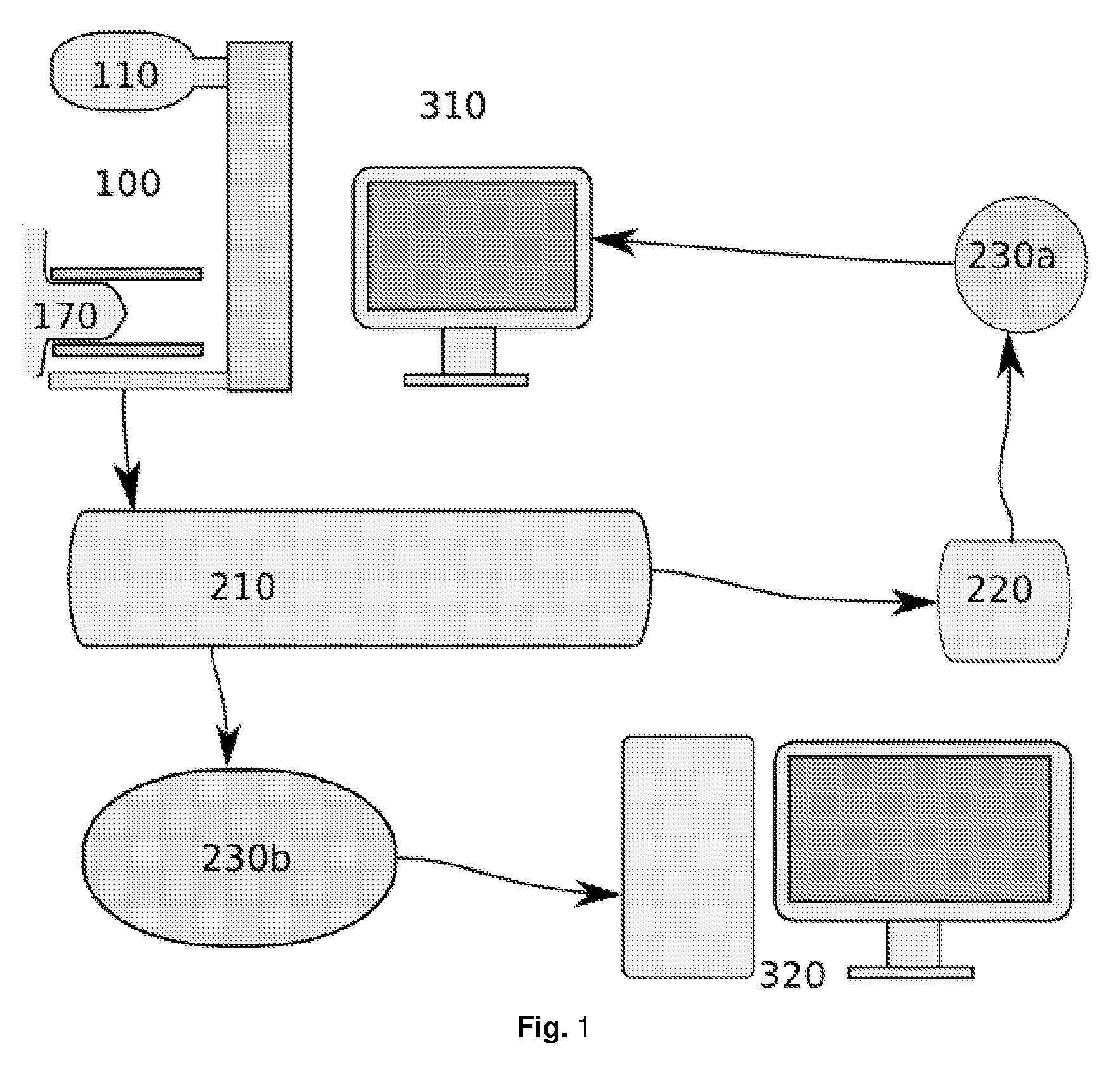Method and arrangement relating to x-ray imaging
a technology of x-ray imaging and method, applied in the field of tomosynthesis, can solve the problems of long processing time, difficult reconstruction time or computational cost, and many years to come, and achieve the effect of being cheap to manufactur
- Summary
- Abstract
- Description
- Claims
- Application Information
AI Technical Summary
Benefits of technology
Problems solved by technology
Method used
Image
Examples
Embodiment Construction
[0020]FIG. 1 shows the preferred embodiment of the present invention implemented in an X-ray acquisition device 100. The device 100 comprises an X-ray acquisition device 100, which produces a set of projection images of a compressed breast, at different angles. The full projection images are stored in a memory unit 210. From here, there are two parallel paths of processing. According to prior art, the full projection images are fed to a reconstruction means 230b, where the full projection images are combined to a three-dimensional volume, which is further used for diagnosis or exported to a Picture Archiving and Communicating System (PACS) 320. According to this embodiment of the present invention, the stored full projection images in the memory unit 210 are also fed to a preview branch, wherein the data first passes through a low resolution provider 220 for providing the projection images at a low resolution. The low resolution provider comprises a sub-sampler for conversion to low...
PUM
 Login to View More
Login to View More Abstract
Description
Claims
Application Information
 Login to View More
Login to View More - R&D
- Intellectual Property
- Life Sciences
- Materials
- Tech Scout
- Unparalleled Data Quality
- Higher Quality Content
- 60% Fewer Hallucinations
Browse by: Latest US Patents, China's latest patents, Technical Efficacy Thesaurus, Application Domain, Technology Topic, Popular Technical Reports.
© 2025 PatSnap. All rights reserved.Legal|Privacy policy|Modern Slavery Act Transparency Statement|Sitemap|About US| Contact US: help@patsnap.com


